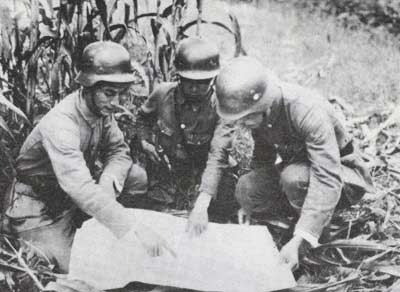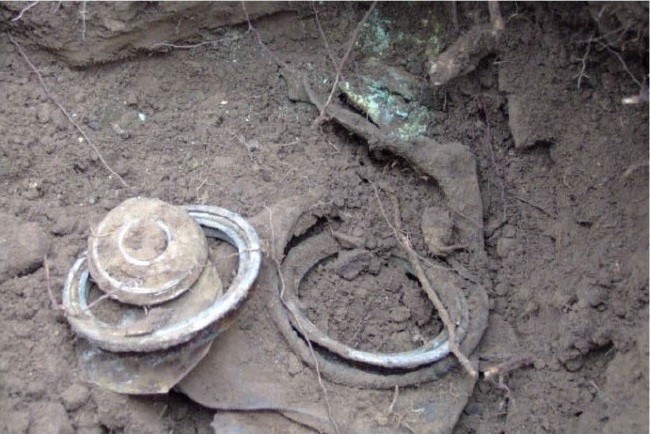Operation Chahar, Part 2
- By Guest blogger
- 7 February, 2016
- No Comments
The Nankou Campaign, sometimes known as “Operation Chahar,” broke out on August 8, 1937, and is largely forgotten today. This article, written by Eric Wu, focuses on the meaning of this campaign based on the study of a range of primary sources. Wu argues that the Chinese Army did not suffer an absolute defeat based on the comparison between the casualties of the Nankou Campaign and some early battles in other theaters during the Second World War. The previous view, that China only resisted the Japanese invasion reluctantly and waited for assistance from other Allies, should be revised. This is the second part of a two-part series.
Historians have not reached any consensus on the significance of the Nankou Campaign. Actually, the research of this event still remains unfinished. Only a few secondary sources have mentioned this campaign with one or more simple sentences.
Among the battles of the same period, the Shanghai Campaign in South China is the most famous. The latest research done by Dr. Guo Daijun (Kuo Tai-chun) at the Hoover Institute has disclosed that the Shanghai Campaign was started by Chiang Kai-shek as he planned. She mentioned that the original goal of the Japanese Army was North-western China instead of South China. By drawing the attention and forces of the Japanese Army to Shanghai, the pressure upon North China would be mitigated somehow. So Chiang Kai-shek tried to trick the Japanese invaders to attack Shanghai so that the Japanese Army would not send too many troops to attack or control North China quickly.[1] This explanation addresses the fact that North Western China, being abundant in natural resources, was the original goal in the Japanese Army’ plan.
A Comparison with the Early Battles in Other Theaters
In previous views of history, there was a perception that Chiang Kai-shek and the Chinese Army he led did not actively fight the Japanese invaders and suffered complete defeats.[2] Such conclusions lack a comprehensive comparison between the battles in the East Asian Theater and other theaters. As one of the earliest campaigns in the Theater of China, Nankou Campaign did not end up with a complete Chinese defeat. Compared to most early battles of the war, in which the Allies always suffered defeats, the Chinese Army did not do worse than other Allies.
Table 3 Some Typical Battles in Early time of the war
| “Allies”[3] | Military Power | Typical Conflict | Year of Battle | Opponent | Result of the Allies |
| China | Poor | Nankou Campaign | 1937 | Japan | retreated |
| U.K. | Fair | Dunkirk Evacuation | 1940 | Germany | retreated |
| U.S. | Good | Battle of Wake Island | 1941 | Japan | surrendered |
| Philippine U.S. | Fair | Battle of Bataan | 1941-42 | Japan | surrendered, death march |
The Chinese forces were much weaker than the Japanese during the war, especially at the beginning when other countries had not entered the war yet. The weaponry of the Chinese Army at that moment was no match for the Japanese; and, starting earlier meant being less prepared. For instance, Chinese soldiers had no antitank weapons; they invented “bundled hand grenades” to resist the Japanese tanks, at a terrible cost of soldiers’ lives, since grenades were only functional in a short range.[4] When the Japanese army could still not break the defense of the Chinese force easily with their overwhelming power, they utilized toxic gas regardless of the Geneva Protocol.[5]
A gas mask found in the battlefield of Nankou Campaign, by Yang Guoqing[6]
The terrain of the mountain ridge and the Great Wall in the battlefield seemed to be the only advantage for the Chinese defense. The truth was different; however, since the Great Wall was built in the Ming Dynasty to defend against the barbarians from the north, while in the Nankou Campaign, the invaders came from the south east.[7]
Were Chiang Kai-shek and his subordinates in the military ineffective commanders, as Stilwell described, the Japanese forces should not have had to fight the Chinese defense for 18 days with chemical weapons. The facts of this campaign reverse the previous view of the military commanding system of the Republic of China. The ROC government had overcome larger obstacles than the other countries in the Allies, even though it might not have led its forces to make a bigger contribution to the final victory of WWII.
Effect on the Later Established Allies
In the 1930s, the Republic of China had many co-operative efforts with Germany, especially in military programs. Many of the advisory counselors in the National Revolutionary Army were German experts. Also, China exchanged the mineral wolfram for weapons to build their mechanized armies, which was unfortunately not accomplished because the war broke out ahead of the time that Generalissimo Chiang Kai-shek had expected.[8]
Germany was an ally and the tutor of Japan; once China engaged in combat against Japan, it had to renounce Germany’s assistance and advising. The German government had considered persuading Japan to stop their attacks on China, if China were willing to join the group that eventually became known as the Axis. But China did not want to join the Axis, and Japan did not want China to be an ally. Instead, Japan’s plan was always to enslave China as its colony.[9] The Republic of China chose to fight for the alliance which was later named the Allies with the out-break of the Nankou Campaign.
Conclusion
Due to the significance of China’s War of Resistance against Japan and its effect on the Second World War, the Nankou Campaign is more than a single event. It was one of the earliest campaigns of North China in a series of plans to resist the Japanese invasion. Since North China was an early objective for Japan to control, it played a crucial role in the East Asian Theater. Understanding the East Asian Theater is a necessary process to patch the gap in the research of WWII history at a global level.
The special situation in China, the rise of the Chinese Communist Party during the postwar time, has made the process of study difficult. The research of the history of the Nankou Campaign must be coordinated with the preservation works in the battlefield in order to ensure the authenticity of the history being interpreted to the public. Unlike the United States and Europe, where a great importance is attached to the study of secondary sources, China has experienced a period of misinterpretation and distortion of its modern history. The research of many historic events in WWII, such as the Nankou Campaign, has to rely on the study of primary sources, which provide more actual and accurate information than secondary sources do.
[1] This is confirmed by Dr. Guo in an interview introducing her recently released book “Revisiting the History of China’s WWII”. The video of this interview is available on YouTube. The book should have included a more detailed content discussing the relationship between the Shanghai Campaign and the battles in North China.
[2] Fairbank, John King. The Cambridge History of China. Edited by John King Fairbank and Albert Feuerwerker. Vol. 13. Cambridge and New York: Cambridge University Press, 1986, pp. 547-608.
[3] Countries of the Allies or the countries fighting for the Allies before the Allies was established.
[4] Gou, Jitang. “The Battles around Nankou.” Chap. 1 in Actual Battles of the Chinese 3rd Front during the War of Resistance against Japan. Taipei: Wenxing Publishing House, 1962, p. 10.Gou 1962, p. 33.
[5] Gou p. 18.
[6] The gas mask in this photo was found by Mr. Yang, a citizen in Changping District who has insisted on searching and collecting remains discovered in the battlefield of Nankou Campaign.
[7] Tan, Ying. Vision of a Drifting Life: Tan Ying’s Memoir at the Age of 100. Taipei: Grace Publishing House, 2011, p. 46. Wang, Zhonglian. A Brief Analysis of Strategic Theories and Actual Battles. Taipei: New Culture Press, 1987, p. 11.
[8] Liu, Frederick Fu. A Military History of Modern China, 1924-1949. Princeton: Princeton University Press, 1956, pp. 109-110.
[9] It is a common sense that Japan always wanted to colonize China and enslave Chinese people during WWII, according to the victims who have (or had) experienced that time. Many oral history records can prove that Chinese people were treated as slaves in areas occupied by the Japanese Army.





 Copyright © 2024
Copyright © 2024
Leave a Reply